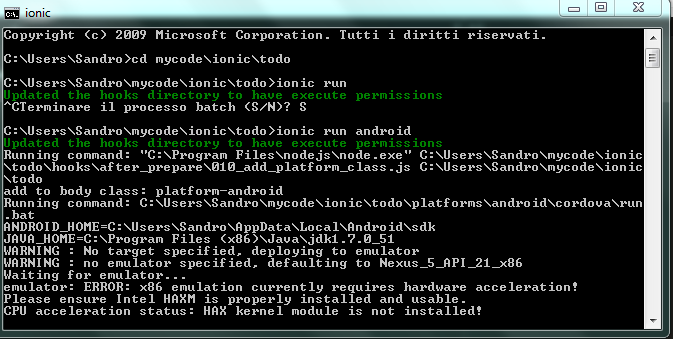

- Ionic run livereload not working how to#
- Ionic run livereload not working install#
- Ionic run livereload not working full#
- Ionic run livereload not working code#
Atom, Netbeans)Īfter Node.js installed and able to run on Terminal or Node command line, run this command on the terminal or Node command line.
Ionic run livereload not working how to#
Ionic 4, Angular, and Cordova Crop and Upload Imageīecause we just show you on how to upload the file from mobile apps, that's mean the file uploaded from Android or iOS apps.Ionic 3, Angular 5, and Cordova Base64 Image Uploader.Node.js, Express.js, and Multer.js REST API for Image Uploader.You can also learn and try these related tutorials: In this tutorial, we will have a combination of Ionic Cordova File Transfer, Image Picker from the Camera or Library, and other required modules. Almost mobile apps have a feature of upload image, avatar, document, etc. Ionic File Upload is one of the essential features in mobile apps development. Test Upload Image File using Android and iOS Device.
Ionic run livereload not working install#

Ionic run livereload not working code#
Absolute URLs in your source code will be resolved using the project root as base, so you can write code as if you are working with a normal static file server (except way more powerful!). You will see it referenced as throughout the rest of the docs. Similar to static http servers, Vite has the concept of a "root directory" which your files are served from. In addition, URLs inside index.html are automatically rebased so there's no need for special %PUBLIC_URL% placeholders. Even inline and CSS referenced via also enjoy Vite-specific features. It resolves that references your JavaScript source code. Vite treats index.html as source code and part of the module graph.

This is intentional: during development Vite is a server, and index.html is the entry point to your application. One thing you may have noticed is that in a Vite project, index.html is front-and-central instead of being tucked away inside public. The supported template presets are: JavaScriptīash npx degit user/project#main my-project index.html and Project Root # You can navigate to vite.new/ to select which framework to use.

It runs the Vite-based build setup directly in the browser, so it is almost identical to the local setup but doesn't require installing anything on your machine. Legacy browsers can be supported via the official - see the Building for Production section for more details. The default build targets browsers that support native ES Modules, native ESM dynamic import, and i ta. You can learn more about the rationale behind the project in the Why Vite section.
Ionic run livereload not working full#
Vite is opinionated and comes with sensible defaults out of the box, but is also highly extensible via its Plugin API and JavaScript API with full typing support. It consists of two major parts:Ī dev server that provides rich feature enhancements over native ES modules, for example extremely fast Hot Module Replacement (HMR).Ī build command that bundles your code with Rollup, pre-configured to output highly optimized static assets for production. Vite (French word for "quick", pronounced /vit/, like "veet") is a build tool that aims to provide a faster and leaner development experience for modern web projects.


 0 kommentar(er)
0 kommentar(er)
